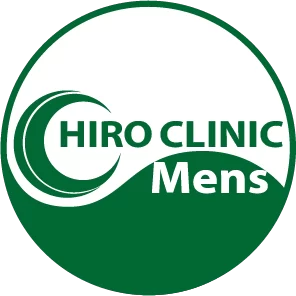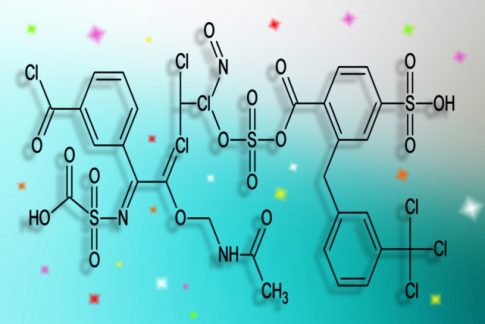Androgenetic alopecia (AGA) is a type of hair loss that can be a serious problem for many men. Early detection and appropriate measures can prevent the progression of AGA and provide effective treatment. In this article, we will explain in detail how to self-diagnose AGA and how to self-check in the early stages.
What is AGA?
AGA is a hair loss caused by the influence of male hormones, and is characterized by thinning of the hair, especially on the front and top of the head. Because the disease progresses quickly, early detection and appropriate measures are important.
Early symptoms of AGA
By understanding the early symptoms of AGA, you can take early measures. Below are some early symptoms of AGA.
1. Hair volume decreases
The most common early symptom is loss of hair volume. Your hair may become thinner and may feel flat overall.
2. Receding hairline on the front of the head
Gradual receding of the frontal hairline is also a typical early symptom of AGA. In particular, if your hairline recedes in an M-shape, there is a high possibility that you have AGA.
3. Thinning hair on the top of the head
Thinning hair on the top of the head is also a common early symptom of AGA. The hair on the top of the head may become thinner and the scalp may become more visible.
4. Increased hair loss
Shedding more hair than usual is also an early symptom of AGA. Be especially careful if you notice increased hair loss while showering or brushing.
AGA self-diagnosis method
If you feel the early symptoms of AGA, you can take early measures by self-diagnosing. Below are some methods for self-diagnosis.
1. Check using a mirror
Use the mirror every day to check the condition of your hair. Pay particular attention to the condition of the hair on the front and top of the head, and check for receding hairlines and thinning of the hair.
2. Take a photo
By taking pictures of your hair regularly, you can objectively check the changes. You can check the progress of thinning hair by taking pictures from the same angle about once a month and comparing them.
3. Check the amount of hair loss
Check the amount of hair that falls out when showering or brushing. Typically, you lose 50 to 100 hairs a day, but if you lose more than that, you may have AGA.
4. Check the health of your scalp
The health of your scalp is also an indicator of AGA. If your scalp is red, itchy, or has a lot of dandruff, it may be a sign of AGA.

Measures to take if diagnosed with AGA
If you are self-diagnosed with AGA, you can prevent the disease from progressing by taking measures early. Below, we will introduce some methods for dealing with AGA.
1. See a specialist
If you feel that there is a high possibility of AGA through self-diagnosis, it is important to see a specialist. A specialist can make an accurate diagnosis and recommend the most appropriate treatment.
2. Use of oral medications
Oral medications such as finasteride (Propecia) and dutasteride (Zagaro) are effective in treating AGA. These drugs suppress the production of DHT (dihydrotestosterone) and prevent hair loss.
3. Use of topical medications
Minoxidil (Reup) is a topical medication applied directly to the scalp that stimulates the hair follicles and promotes hair growth. It is especially effective when used in the early stages.
4. Maintain a healthy lifestyle
By eating a nutritionally balanced diet, getting proper exercise, and getting enough sleep, you can maintain the health of your hair and prevent the progression of AGA.
Review of eating habits
1. Intake of B vitamins
B vitamins are important for promoting hair growth. Increase your intake of foods rich in B vitamins, such as liver, eggs, legumes, and whole grains.
2. Iron intake
Iron is needed to promote blood circulation and nourish hair follicles. Include iron-rich foods such as red meat, spinach, and lentils.
3. Intake of omega-3 fatty acids
Omega-3 fatty acids are important for maintaining scalp health. Get it from foods like salmon, tuna, walnuts, and chia seeds.
stress management
Stress is a factor that accelerates the progression of AGA, so manage stress by incorporating relaxation techniques and moderate exercise. Relaxation techniques such as meditation, yoga, and deep breathing can be helpful.
Regular follow-up
Treatment of AGA requires a long-term commitment. You will see a specialist regularly to check the effectiveness of your treatment and adjust your treatment plan if necessary.
Latest trends in AGA treatment
1. Low-power laser therapy (LLLT)
Low-power laser therapy is a treatment that uses a low-power laser to irradiate the scalp to stimulate the hair follicles. There are many devices on the market that can be used at home, making treatment easy.
2. PRP therapy
PRP therapy is a treatment in which platelets extracted from the patient’s own blood are injected into the scalp to stimulate hair growth. Its effectiveness can be increased by using it in conjunction with oral or topical medications.
In conclusion
AGA can be prevented from progressing by detecting it early and taking appropriate measures. It is important to understand how to self-diagnose and to see a specialist if you notice early symptoms. Effective measures against AGA can be achieved by combining various treatments such as oral and topical drugs, low-power laser therapy, and PRP therapy. In addition, by maintaining a healthy lifestyle, you can maintain the health of your hair and prevent the progression of AGA. By performing regular follow-ups and continuing appropriate treatment under the guidance of a specialist, you can resolve your AGA problems and regain your confidence.
AGA treatment at Hiro Clinic
AGA (Androgenetic Alopecia) is a disease called male pattern baldness, which progresses if left untreated, so early treatment is necessary. The causes of AGA vary depending on the individual, but it is not a disease that cannot be treated. Hiro Clinic uses cutting-edge regenerative medicine technology to treat AGA. Our specialized doctors will suggest appropriate treatment methods tailored to each individual and will do their best to support your concerns.








